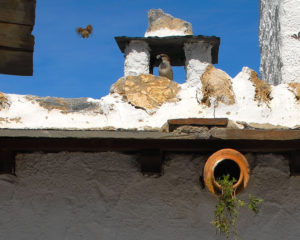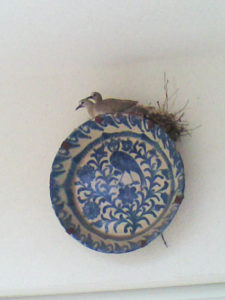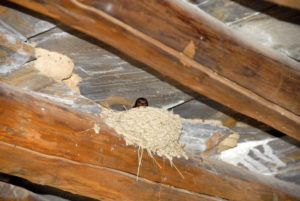 Andalucia is a birdwatcher’s paradise where many of Western Europe’s birds can be seen. The variety of terrain is an important factor and here at the Alqueria we are within easy reach of the coast – cliffs, rocks and sandy beaches, wetlands and marsh: scrubland and semi desert: farmland, orchards and gardens: hills and alpine high mountains.
Andalucia is a birdwatcher’s paradise where many of Western Europe’s birds can be seen. The variety of terrain is an important factor and here at the Alqueria we are within easy reach of the coast – cliffs, rocks and sandy beaches, wetlands and marsh: scrubland and semi desert: farmland, orchards and gardens: hills and alpine high mountains.

All times of the year there are birds of interest although, of course, Spring (March – May) is generally best for seeing the widest range of species. Visits in early Spring (March -April) give one the best chance of seeing many of the winter species as well as some of the arriving migrants. Spring also has the advantage of loud birdsong which makes identification so much easier and the raptors can be seen in astonishing aerial displays. Summer can be very hot but colourful tourists include bee eaters, woodchat shrikes and rollers. Autumn is a good season for birding and walking and again there are plenty of birds on passage. Winter has the attraction of the wintering species including cranes, raptors and waterfowl.

Below is a list of the birds seen within walking distance of the Alqueria in the past twenty years. If any of our guests would like more information about the list or where to see birds please ask at reception.
S=summer Y=year round M=migrant W=winter V=vagrant
- HERONS: Y Grey Heron, S White Stork
- BIRDS OF PREY: S Black Kite, Y Black Vulture, M Griffon Vulture, Y Common Buzard, Y Golden Eagle, Y Bonnelli’s Eagle, Y Short Toed Eagle, S Booted Eagle, Y Common Kestrel, Y Lesser Kestrel, Y Peregrine Falcon
- GAME BIRDS: Y Red Legged Partridge, Y Common Quail
- WADERS: V Green Sandpiper
- PIGEONS AND CUCKOOS: Y Rock Dove, Y Stock Dove, Y Wood Pigeon, S Turtle Dove, Y Collared Dove, S Cuckoo, S Great Spotted Cuckoo
- OWLS: S European Scops Owl, Y Eagle Owl, Y Little Owl, S European Nightjar
- WOODPECKERS AND ALLIES: S Pallid Swift, S Eurasian Swift, S European Bee Eater, S European Roller, Y/S Hoopoe, S Wryneck, Y Green Woodpecker
- LARKS SWALLOWS AND PIPITS: Y Calendra Lark, Y Lesser Short Toed Lark, S Short Toed Lark, Y Thekla Lark, Y Crested Lark, Y Skylark, Y Woodlark , W Tawney Pipit, W Meadow Pipit
- WRENS AND ALLIES: Y Grey Wagtail, S Yellow Wagtail, Y Pied Wagtail, Y Dipper, Y Northern Wren, Y Alpine Accentor, S Rufus Scrub Robin,
- CHATS AND THRUSHES: Y European Robin, S Nightingale, S Common Redstart, Y Black Redstart, Y Stonechat, S Northern Wheatear, S Black Eared Wheatear, Y Black Wheatear, S Rock Thrush, Y Blue Rock Thrush, Y Blackbird, S Songthrush, Y Mistle Thrush
- WARBLERS AND FLYCATCHERS: Y Letti’s Warbler , Y Fan Tailed Warbler, Y Dartford Warbler, Y Sardinian Warbler, Y Black Cap, Y Chiff Chaff, W Goldcrest , Y Firecrest , S Spotted Flycatcher, S Pied Flycatcher
- TITS NUTHATCHES AND TREECREEPERS: Y Coal Tit, Y Blue Tit, Y Great Tit , Y Short Toed Tree Creeper, Y Long Tailed Tit
- SHRIKES AND CROWS: S Golden Oriole, Y Great Grey Shrike, Y Southern Grey Shrike, S Woodchat Shrike, Y Jay, Y Magpie, Y Red Billed Chough, Y Carrion Crow, Y Rook, Y Raven, Y Jackdaw, Y Spotless Starling
- SPARROWS FINCHES AND BUNTINGS: Y Spanish Sparrow, Y House Sparrow, Y Rock Sparrow, Y Chaffinch, Y European Serin, Y Greenfinch, Y European Goldfinch, Y Linnet, W Siskin, Y Common Crossbill, Y Rock Bunting, Y Cirl Buntin, Y Corn Bunting
Autors: Miranda Ravetto and Trevor

